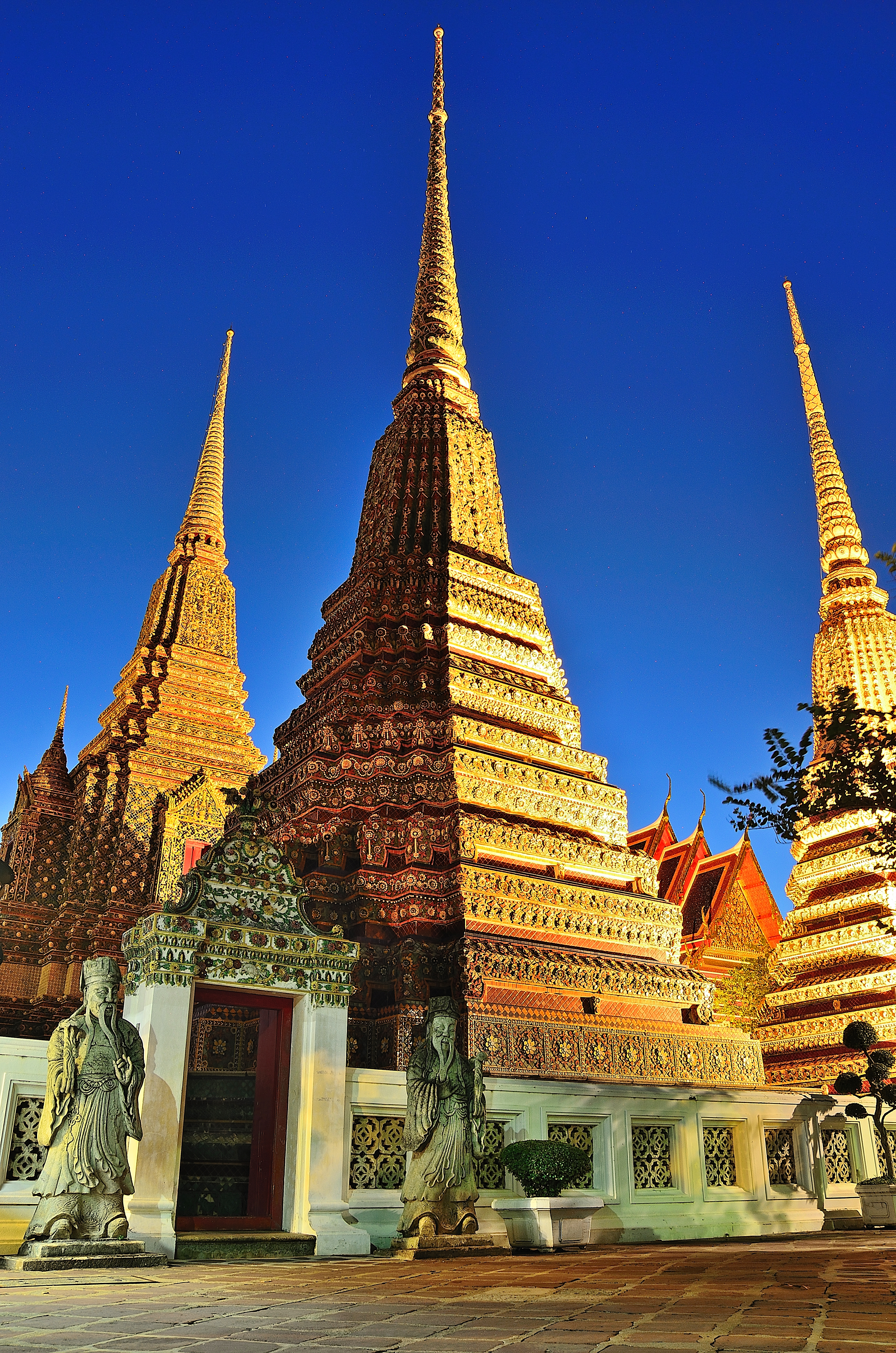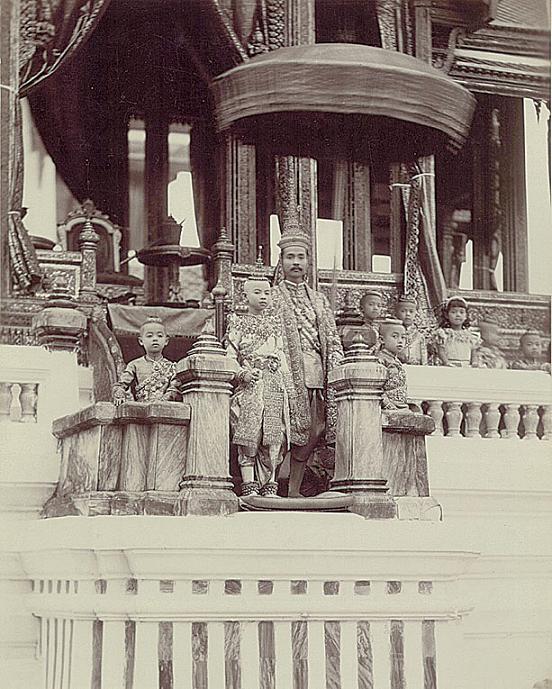|
Saranrom Park
Saranrom Park ( th, สวนสราญรมย์, , ) is a public park in Bangkok. It is located opposite the Grand Palace, between Sanam Chai, Charoen Krung and Rachini roads in Phra Borom Maha Ratchawang Subdistrict, Phra Nakhon District. The park occupies the former grounds of Saranrom Palace, which was built in 1866 and served as the residences of several princes and royal guests. The palace gardens were converted to serve as a public park under the Bangkok Metropolitan Administration in 1960. History In the past Saranrom Park was the part of Saranrom Palace which was established in 1874 by King Chulalongkorn (RamaV) on the advice of Henry Alabaster who desired this park to be similar to other country. It was decorated by fountains, garden flowers, orchids, perennial plant especially “red roses” which were a favorite flowers of Rama V and there are bird cages and animal cages in the park at that moment. Later in 1904, King Vajiravudh (Rama VI) used this park ... [...More Info...] [...Related Items...] OR: [Wikipedia] [Google] [Baidu] |
Miss Thailand
Miss Thailand ( th, นางสาวไทย; ), is a beauty pageant held in Thailand for Thai women, first held on December 10, 1934, in Phra Nakhon District of Bangkok, under the name of Miss Siam ( th, นางสาวสยาม; ). The winner of Miss Thailand used to represent the country at Miss Universe, while 1st Runner-up presented at Miss Asia Pacific International. However, Miss Thailand Organization lost these licenses to Miss Thailand Universe in 2000. The last Miss Thailand to represent her country at Miss Universe 1999 is Apisamai Srirangsan, Miss Thailand 1999. In 2019, Sireethorn Leearamwat, Miss Thailand 2019, represented the country at Miss International 2019 and won the title for the first time for Thailand. The reigning Miss Thailand 2022 is Manita Farmer from Phuket. Broadcast The beauty pageant was broadcast on BBTV (channel 7) until 2000, then moved to ITV, which later was transformed into TITV (Thailand Independent Television) and TPBS (Thaila ... [...More Info...] [...Related Items...] OR: [Wikipedia] [Google] [Baidu] |
Wat Pho
Wat Pho ( th, วัดโพธิ์, ), also spelled Wat Po, is a Buddhism, Buddhist temple complex in the Phra Nakhon, Phra Nakhon District, Bangkok, Thailand. It is on Rattanakosin Island, directly south of the Grand Palace, Bangkok, Grand Palace. Known also as the Temple of the Reclining Buddha, its official name is Wat Phra Chetuphon Wimon Mangkhalaram Rajwaramahawihan ( th, วัดพระเชตุพนวิมลมังคลารามราชวรมหาวิหาร; ). The more commonly known name, Wat Pho, is a contraction of its older name, ''Wat Photaram'' (; ). The temple is first on the list of six temples in Thailand classed as the highest grade of the first-class royal temples. It is associated with King Rama I who rebuilt the temple complex on an earlier temple site. It became his main temple and is where some of his ashes are enshrined. The temple was later expanded and extensively renovated by Rama III. The temple complex houses the largest ... [...More Info...] [...Related Items...] OR: [Wikipedia] [Google] [Baidu] |
Hopea Odorata
''Hopea odorata'', or ta-khian ( th, ตะเคียน), is a species of plant in the family Dipterocarpaceae. It is found in Bangladesh, Cambodia, India, Laos, Malaysia, Myanmar, Thailand, and Vietnam. It is a large tree reaching up to 45 m in height with the base of the trunk reaching a diameter of 4.5 m. It grows in forests, preferably near rivers, at altitudes between 0 and 600m. In places such as West Bengal and the Andaman Islands it is often planted as a shade tree. Valued for its wood, it is a threatened species in its natural habitat. Traditions In Thailand this tree is believed to be inhabited by a certain tree spirit known as Lady Ta-khian ( th, นางตะเคียน), belonging to a type of ghosts related to trees known generically as ''Nang Mai'' (นางไม้). Gallery File:A leaf of Hopea odorata.jpg, A leaf of ''Hopea odorata'' File:Takian77.JPG, Lengths of brocade tied around the exposed roots of a Hopea odorata tree (ตะเคียน) ... [...More Info...] [...Related Items...] OR: [Wikipedia] [Google] [Baidu] |
Nang Ta-khian
Nang Ta-khian ( th, นางตะเคียน, "Lady of Ta-khian") is a female spirit of the folklore of Thailand. It manifests itself as a woman that haunts ''Hopea odorata'' trees. These are very large trees known as ''Ta-khian'' (ตะเคียน) in Thai, hence her name. Legends The Nang Ta-khian belong to a type of spirits or fairies related to trees and known generically in Thai folklore as ''Nang Mai'' (นางไม้, "Lady of the Tree"). Legends in the Thai oral tradition say the spirit inhabits a Ta-khian tree and sometimes appears as a beautiful young woman wearing traditional Thai attire, usually in reddish or brownish colours, contrasting with ''Nang Tani'' who is mostly represented in a green dress. Nang Ta-khian is generally a sylvan spirit, for the Ta-khian is a tall, massive tree that can live for centuries, naturally found in the forest and not near inhabited areas. As it has a large trunk and a wide-spreading root system, it is normally not plante ... [...More Info...] [...Related Items...] OR: [Wikipedia] [Google] [Baidu] |
Chinese Pagoda
A pagoda is an Asian tiered tower with multiple eaves common to Nepal, India, China, Japan, Korea, Myanmar, Vietnam, and other parts of Asia. Most pagodas were built to have a religious function, most often Buddhist but sometimes Taoist, and were often located in or near viharas. The pagoda traces its origins to the stupa of ancient India. Chinese pagodas () are a traditional part of Chinese architecture. In addition to religious use, since ancient times Chinese pagodas have been praised for the spectacular views they offer, and many classical poems attest to the joy of scaling pagodas. Chinese sources credit the Nepalese architect Araniko with introducing the pagoda to China. The oldest and tallest pagodas were built of wood, but most that survived were built of brick or stone. Some pagodas are solid with no interior. Hollow pagodas have no higher floors or rooms, but the interior often contains an altar or a smaller pagoda, as well as a series of staircases for the vis ... [...More Info...] [...Related Items...] OR: [Wikipedia] [Google] [Baidu] |
Museum Siam
Museum Siam ( th, มิวเซียมสยาม) is a discovery museum that is located at Sanam Chai road in Bangkok, Thailand. The museum was established in 2007 in the former building of the Ministry of Commerce. It was created to teach the national identity and history of the people of Thailand, and their relationships with neighboring cultures. The motto of the museum is “Play + Learn = เพลิน” (which means 'joyously' in Thai); through a series of interactive exhibits, the museum shows the development of Thailand from the past to present. Architecture The museum building was originally built as the offices of the Ministry of Commerce during the reign of King Vajiravudh (Rama VI, 1910–1925). The land previously belonged to a palace which served as the residence of several sons of King Rama III. The building, in the classical revival style, was designed by Italian architect Mario Tamagno, in collaboration with engineer E.G. Gollo and another architect named ... [...More Info...] [...Related Items...] OR: [Wikipedia] [Google] [Baidu] |
Phan (tray)
Phan ( th, พาน, ) is an artistically decorated tray with pedestal. It is common in Thailand, Cambodia, and Laos. Description A phan is normally round and comes in different sizes. The usual measures range between a diameter of 20 cm to about 50 cm. It is more or less deep. Phans are usually made of metal such as copper, silver, brass, or steel. Nowadays aluminum or gilded plastic is generally used, which makes the phan lighter. This is convenient, for sometimes they have to be carried for a long time. Tradition The phan trays are traditionally very important in Thai culture. Phans are generally used for ritual devotional practices and offerings may be placed on phans by the shrines. Phans are also used for containing other highly important things, including legal documents such as the constitution, or offerings to royalty. Phans are also to bring the items of the Buddhist ceremony for young men who are to be ordained as monks, like robes, incense Incense i ... [...More Info...] [...Related Items...] OR: [Wikipedia] [Google] [Baidu] |
Constitution Of Thailand
The Constitution of the Kingdom of Thailand ( th, รัฐธรรมนูญแห่งราชอาณาจักรไทย; ) provides the basis for the rule of law in Thailand. Since the abolition of the absolute monarchy in 1932, Thailand has had 20 charters or constitutions (as of 2015), an average of one roughly every four years. Many changes followed military coups, reflecting the high degree of political instability in the country. After each successful coup, military regimes abrogated the existing constitution, generally without public consultation. The 1997 Constitution of Thailand, often called the "people's constitution", was considered a landmark in terms of the degree of public participation involved in its drafting as well as the democratic nature of its articles. It stipulated an elected bicameral legislature, and many human rights were explicitly acknowledged for the first time. Many of these reforms disappeared in the military coup of 2006. The c ... [...More Info...] [...Related Items...] OR: [Wikipedia] [Google] [Baidu] |
Sirindhorn Anthropology Centre
Princess Maha Chakri Sirindhorn Anthropology Centre (SAC) ( th, ศูนย์มานุษยวิทยาสิรินธร) is an academic institution under the Ministry of Culture in Taling Chan District, Bangkok, Thailand, established in 1992, with the aim of the systematic gathering, processing, and maintenance of anthropological data scattered throughout the country. The centre was initiated by Silpakorn University in 1991, started as a faculty-equivalent unit within the university. It became an autonomous organisation in 2000. The institute is named after Maha Chakri Sirindhorn, Princess Royal of Thailand. History In 1989, Silpakorn University established the project of organizing the centre to glorify Princess Maha Chakri Sirindhorn on the occasion of her 36th birthday in 1991, given her interest in anthropology and related subjects, such as history, linguistics, and archaeology. The project was approved by royal decree A decree is a legal proclamation, usuall ... [...More Info...] [...Related Items...] OR: [Wikipedia] [Google] [Baidu] |
Vajirunhis
Maha Vajirunhis, Crown Prince of Siam ( th, มหาวชิรุณหิศ; ; 27 June 1878 – 4 January 1895) was the first Crown Prince of Thailand, Crown Prince of the Chakri dynasty. He was the first son of King Chulalongkorn and Queen Savang Vadhana together, who were half-siblings. The King built a palace for the Prince, nicknamed Windsor Palace (Thailand), Windsor Palace. The European-style palace was demolished after his death. The site is now occupied by the National Stadium (Thailand), National Stadium of Thailand. Heir apparent In 1886, after the death of the last Front Palace, Vice King Wichaichan, Bovorn Vichaichan, King Chulalongkorn chose not to appoint one of his brothers as a new Vice King, but instead appointed his eldest son as the Crown Prince of Thailand, Crown Prince of Siam. On 14 January 1886, he was officially introduced to his position with the title of ''Sayam Makutrajakuman'', or Crown Prince of Siam. From this appointment Sir Ernest Mason Sat ... [...More Info...] [...Related Items...] OR: [Wikipedia] [Google] [Baidu] |




